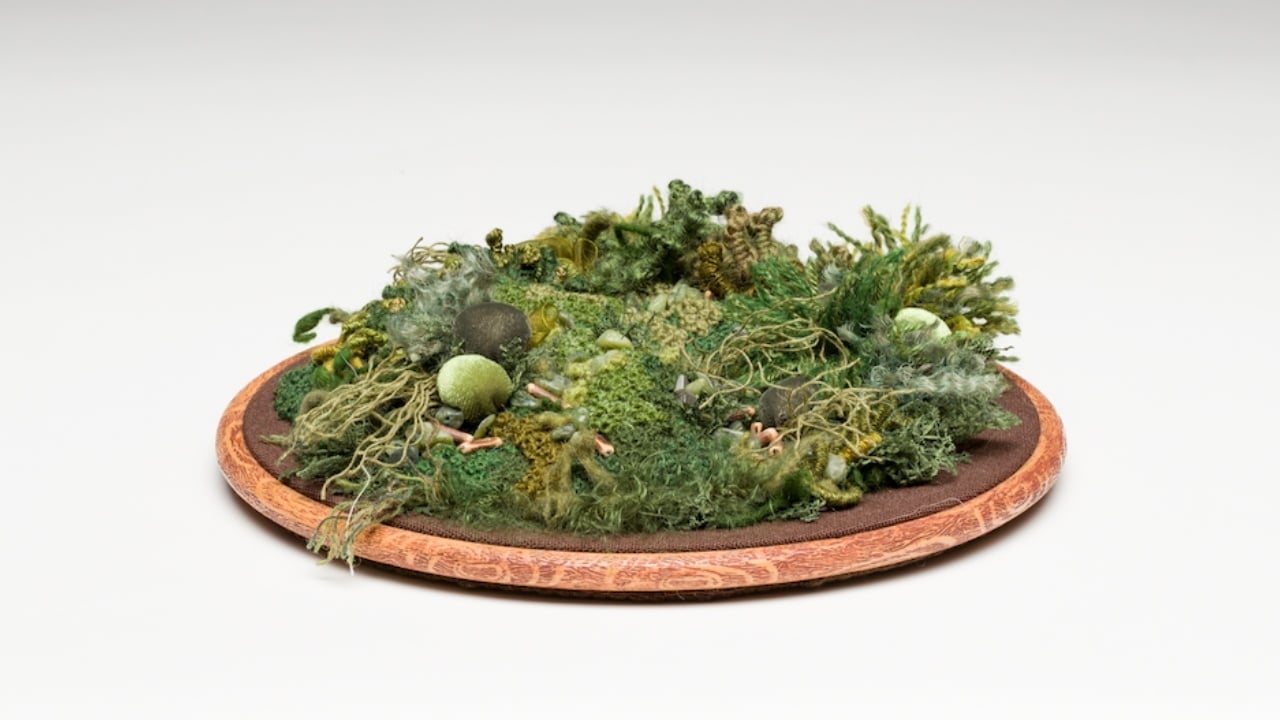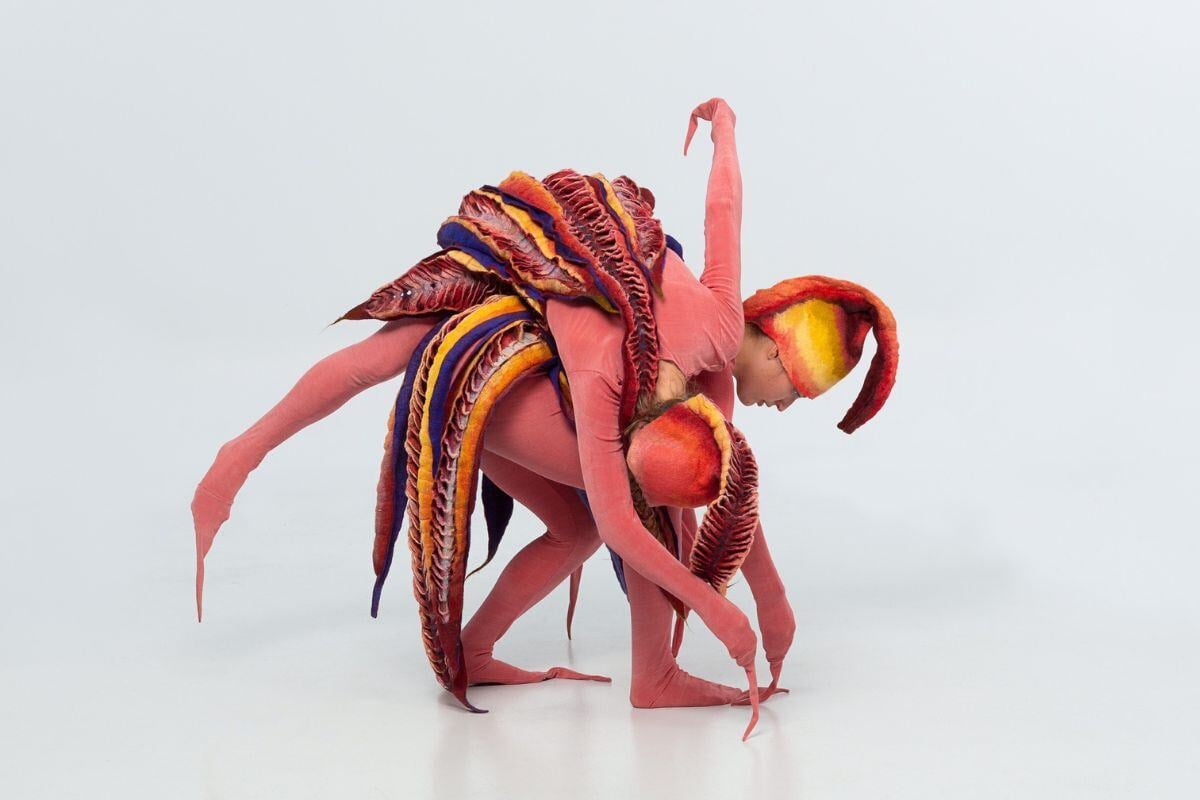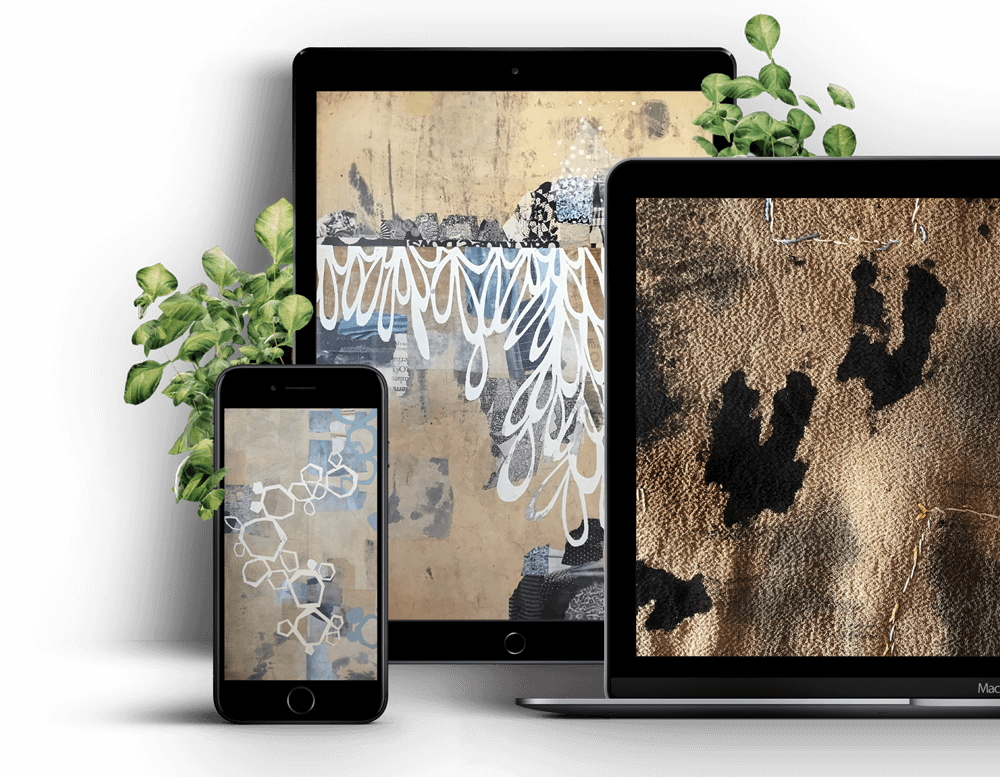Sue Hotchkis: The Beauty of Aging and Decay
Sue is a fibre artist with a fascination for decay. During her Friday Feature Artist interview Sue talks about redefining traditional embroidery and quilting and shares her insights and her process.
Sue Hotchkis's Friday Feature Artist Interview can be found at the bottom of this page.
Welcome to the world of Sue Hotchkis, a textile artist based in the Highlands of Scotland, who draws inspiration from her travels and the weathered remnants of urban life.
Sue creates abstract forms and fragments that blur the boundaries of 2D and 3D, transforming the everyday into the extraordinary. Sue's unique approach involves constructing her own material surfaces using a blend of photography, dyeing, print and stitch.
Rather than replicating captured images by playing with shape and form, Sue creates artwork that resonates with a delicate balance of nature and urban decay.
.jpg?width=628&height=628&name=Sue%20Hotchkis%20(3).jpg)
Artistic Foundations
Growing up in the north of England, it took a while for Sue to settle on art, “I spent the beginning of my life in Hull, and then I moved to Manchester, so the northern part of the country,” she says. “I didn't start out doing my artwork but I was always creative, always making things, always sewing. I worked for the electricity board for about nine years, and then they offered voluntary redundancy, and I thought, ‘Well, this is a good time to do the degree I always wanted to do.’ So I worked part-time and did a foundation course.”
While she initially gravitated towards painting, Sue soon discovered a passion for textiles. “As a child, I would paint, and that's what I was encouraged to do, but the drawing part of the foundation course was at the end of the week when I was working, so I didn't get to do that. Obviously, I still painted and drew, but discovering textiles was amazing. I always loved fabric as a child. I would work with fabric, and I had a sewing machine when I was seven, a little hand one, and I always embroidered, so it just felt that the emphasis was more on the embroidery in the textile part of it.”
After this, Sue was lucky enough to enrol in a degree in embroidery, which sadly no longer exists, “It was an amazing degree.” she explains. “And when I tell people I have a degree in embroidery, they think, ‘Oh, so you spent three years just sewing?’, but it wasn't like that. It was an all encompassing degree to do with print and ways to explore embroidery. So, embroidery could be something like hammering nails into a piece of wood. They could represent stitches. It didn't have to be little things. It was an amazing course. I did an MA as well. Once I'd done those, I went into teaching, which is often what people do because you need to earn some money.”
Finding Inspiration In Decay
Sue finds inspiration all around her, “I think it's about looking, and, for me, it was always about finding inspiration. When I was living in Manchester, there was lots of decay around, not dissing Manchester, I love Manchester! But it was an urban city, so to find inspiration for my work, I just walked around and I saw it all over. For me, it's just about looking, and now it's a habit. I find I can find inspiration even now that I live in a really beautiful, rural landscape. My work still is all about decay because that's what I'm drawn to. I just love the way it creates patterns and marks and it's always changing.”

Why Cheap Is Better
Sue usually starts by printing or dyeing her fabrics, “If it's something I can't really dye, if it's synthetic, I print over the top and then I might stitch on it, and then I might burn it with a heat gun and melt it, if it's synthetic.
If it's felt, I use synthetic felt, I can burn that as well. Sometimes, I'll distort it with stitch, alter the shapes, and build and layer things. I alter the shape and form of something, so I try to change it so it doesn't look like how it started. If I was dyeing, something that's got to be a natural fibre, some sort of cotton. Then I tend to use synthetic foil stuff, which is really cheap, like organza because you can melt it, and because it's cheap, you're not frightened to use it.”
Not being afraid to work with her fabric is another key aspect of Sue’s work, “You don't want to be precious. If you spend lots and lots of money on a piece of fabric, you don't want to cut it up, you don't want to make a mistake. But you've got to make mistakes, and you've got to be able to be free and experimental, and then things grow from that. I quite like the fact that I use cheap fabrics for that reason.”
Pushing Forward
Sue is always pushing her work, and she advises aspiring artists to do the same. “I try and explore techniques,” Sue says. “I try and just keep changing the work. I try and explore different areas, look at it from different viewpoints. I think we're all trying to get somewhere, as artists. It's like a journey. You've got to push it, push your work, and you develop something. You're trying to get something, and each piece is getting you a bit closer to that thing.”
.jpg?width=645&height=645&name=Sue%20Hotchkis%20(2).jpg)
About Sue Hotchkis
Sue Hotchkis constructs abstract forms, fragments, to highlight the beauty found in the processes of aging and decay. The core theme of her work is colour, texture and surface, strongly influenced by the Japanese aesthetic of Wabi-Sabi. Sue is interested in the relationship between the natural elements and the man-made, such as that resulting from erosion and human use. Nature has its own way of taking back and reclaiming the artificial. It's the meeting of the two she finds interesting. Sue seeks out imperfection, in the insignificant and the overlooked, recording marks and surfaces that are in the process of breaking down, ephemeral, and in a state of flux.
Working intuitively with print and stitch, marks, textures and colours are exaggerated, intensified to reveal the detail and complexity within the images. Sue deconstructs materials using modern methods, so they are ripped, burnt or dyed. Sue then invests time in their reconstruction; pieces can take from a week to several months to create. Whilst being aesthetically pleasing the work can also act as a metaphor for deterioration and ruin, associated with urban decay and ultimately death and loss. Sue’s pieces evolve organically, built up with layers of print, cloth, paper, and stitch into three-dimensional abstract forms that hover between object and image; to create a unique, visual and tactile landscape of form and texture. Challenging traditional understandings of the division between the visible and the unseen.
Join Our Newsletter
OUR YOUTUBE CHANNEL
View our interviews and more on our Youtube channel!
OUR FACEBOOK GROUP
Join our Community and stay updated with our upcoming announcements!

.jpg)


